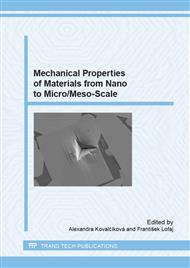p.19
p.23
p.27
p.31
p.35
p.39
p.43
p.47
p.51
Influence of Hydrogen Content on Microstructure and Mechanical Properties of Zr1Nb Fuel Cladding after High-Temperature Oxidation
Abstract:
The aim of this study is to investigate the influence of hydrogen on the microstructure and mechanical properties of Zr1Nb fuel cladding after high-temperature oxidation. As-received or pre-hydrided materials were tested. The influence of different cooling rates was examined as well. The microstructure was observed using of light microscopy. Oxygen distribution was measured using X-ray microanalysis. Local mechanical properties were determined by the microhardness and nanohardness measurements. Ring compression testing (RCT) was employed with the aim to obtain the macroscopic mechanical properties. Fractographic analysis was performed after the RCT. The experimental results confirmed that hydrogen as well as the cooling rate substantially influenced the microstructure and affected both local and macroscopic mechanical properties.
Info:
Periodical:
Pages:
35-38
Citation:
Online since:
September 2015
Keywords:
Price:
Сopyright:
© 2015 Trans Tech Publications Ltd. All Rights Reserved
Share:
Citation:


